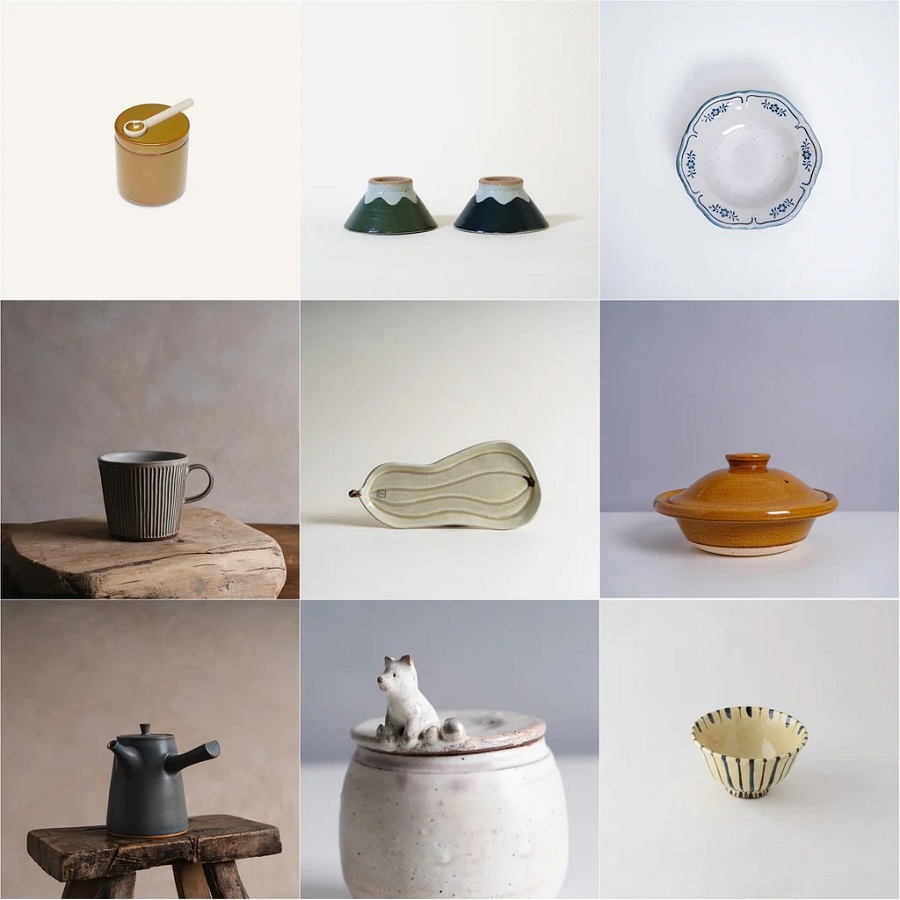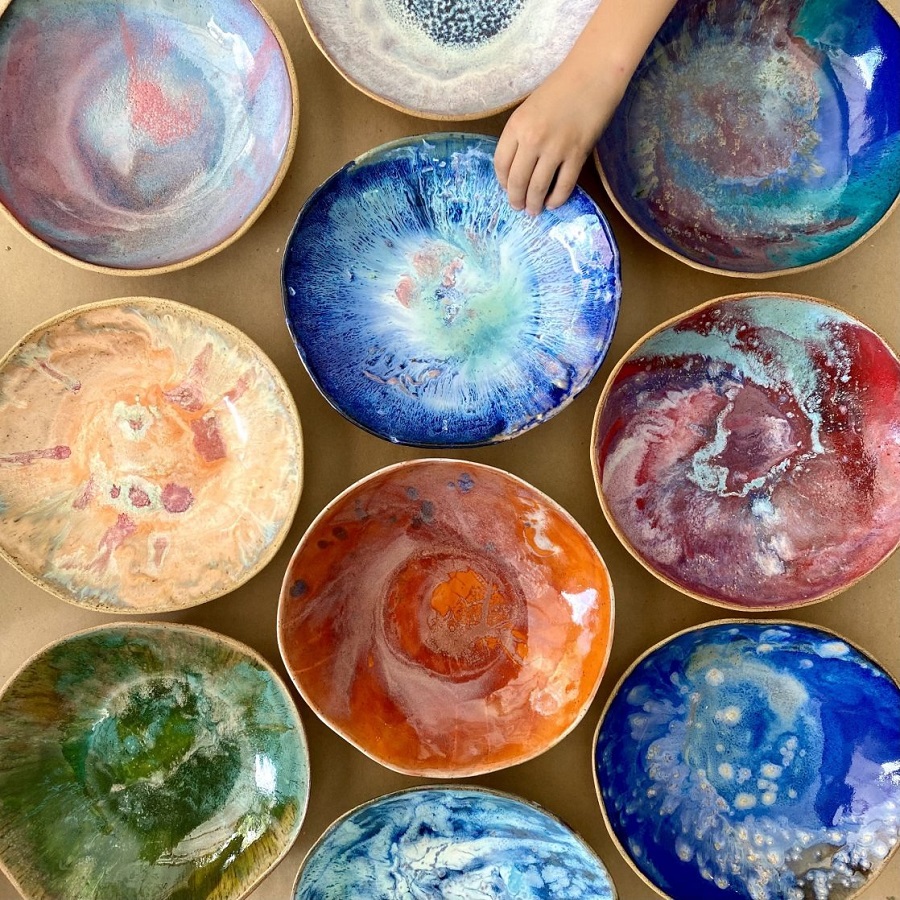Introduction to Ceramics and Pottery
In exploring the difference between ceramics and pottery, we first clarify what each represents. Ceramics is a broad term that refers to objects made from clay and hardened by heat. It encompasses a wide range of products that include tiles, figurines, and advanced technical items, like insulators and spacecraft heat shields. Pottery, on the other hand, is a subset of ceramics. It specifically refers to containers or vessels made from clay. These are usually crafted for domestic use, such as vases, bowls, and pots. They are shaped by various techniques, dried, and then fired to become sturdy and durable.
Understanding the differentiation helps us appreciate the artistry and functionality unique to each. Pottery is often praised for its practical application, while ceramics span beyond utility to include decorative and industrial uses. In the following sections, we’ll delve deeper into the distinct characteristics that define ceramics and pottery.

The Basics of Ceramics
Ceramics are primarily made from clay and other natural materials. The creation process begins with the selection of the right kind of clay. Artisans then shape the clay into the desired form, through hand-building, throwing on a potter’s wheel, or casting in molds. After shaping, the items undergo a drying phase which preps them for firing. The firing process is crucial as it hardens the clay through exposure to high temperatures in a kiln.
Several types of clay are used to make ceramics, including earthenware, stoneware, and porcelain. Each kind varies in color, durability, and ideal firing temperature. Earthenware is typically fired at lower temperatures and is more porous than stoneware and porcelain. Stoneware, fired at higher temperatures, is known for its sturdiness and waterproof capabilities. Porcelain, the finest type of clay, is valued for its delicate texture and translucence after being fired at very high temperatures.
Ceramics also include non-clay materials such as cement or glass. With advancements in technology, ceramics now also feature composite materials, which enhance their strength and allow usage in diverse environments. The blending of traditional techniques with modern innovation results in ceramics that serve various purposes, from artistic expression to scientific applications. They can be found in everyday household items, architectural designs, and even spacecraft components—the difference between ceramics and pottery becomes more evident as their range of use broadens beyond the traditional scope.
The Basics of Pottery
Pottery centers on creating vessels from clay meant for everyday use. Crafters form these items by hand or on a potter’s wheel, tapping into ancient practices. The focus is on utility and simplicity, producing items such as pots, plates, and jars. Pottery, unlike broader ceramics, is often limited to earthenware and stoneware clays. These materials are selected for their ability to create functional ware.
After shaping, pottery must dry before firing. This stage is delicate and requires careful handling to prevent cracks. Once dry, the items undergo firing in a kiln. The temperatures for firing pottery are usually within the range that seals the clay without vitrifying it, unlike porcelain. The result is a sturdy, practical product.
The difference between ceramics and pottery is clear in this stage. While ceramics can be fired at various temperatures and sometimes include other materials, pottery sticks to a narrow set of clays and a specific firing range. This restriction is due to the need for the end product to be practical for daily use. Pottery pieces often feature glazes that make them non-porous and safe for food storage or consumption. Artists working with pottery also pay attention to glazes to improve durability and appeal. Understanding the basics of pottery helps in appreciating its role in everyday life and the distinction from the broader world of ceramics.
Materials and Composition Differences
The key distinctions in materials and composition set ceramics and pottery apart. Here’s how:
Ceramics: While all ceramics start with clay, the variety is broad. Ceramics may incorporate earthenware, stoneware, porcelain, or even non-clay materials like cement and glass. Different clays and additives result in varied textures and properties. For example, porcelain achieves a translucent quality because of the finer clay and higher firing temperature.
Pottery: In pottery, the materials are more specialized. Crafters use mainly earthenware and stoneware clays. These are chosen for their durability and workability. Pottery does not commonly include non-clay materials. Unlike porcelain ceramics, pottery items are rarely translucent and are often thicker and more opaque due to the nature of these clays.
Another composition aspect is the presence of glaze. Glazes are often used in both ceramics and pottery to decorate or waterproof items. In pottery, glaze plays a critical role in making vessels suitable for storing and consuming food. It creates a non-porous surface that prevents liquids from seeping through.
The difference between ceramics and pottery in their composition underlies their unique qualities. As such, choosing the right material is crucial for the desired outcome, whether it’s for a practical kitchen pot or an intricate ceramic sculpture.

Techniques and Processes
When distinguishing the difference between ceramics and pottery, techniques and processes play a vital role. Both ceramics and pottery begin with shaping clay. Yet, the methods artisans use and the processes they follow can differ greatly.
Ceramics Techniques
Ceramics makers often use a variety of techniques. Some common methods include:
- Hand-building: Artists mold and shape the clay by hand, allowing for unique textures.
- Throwing: Using a potter’s wheel, craftsmen form symmetrical items quickly and efficiently.
- Slip casting: Liquid clay, known as slip, fills molds to create identical shapes.
After molding, ceramics need drying. Drying is crucial. It removes moisture to prevent cracking during firing. The firing stage then hardens the ceramics at high temperatures.
Pottery Techniques
Pottery, on the other hand, mainly relies on:
- Hand-building: Crafters shape the clay without machines, focusing on practical shapes.
- Wheel-throwing: Potters use wheels to create functional vessels meant for daily use.
The key difference is in the temperature ranges. Pottery fires often at lower temperatures than some ceramics, especially porcelain.
Both ceramics and pottery use glazing as a final process. This involves applying a glass-like coating. Glazes protect and decorate the surface. However, with pottery, glazes also ensure that vessels are fit for holding food and liquids.
These techniques and processes highlight the difference between ceramics and pottery. They showcase the artistry and skill involved in creating both functional and decorative items. While they share some similarities, their distinct practices cater to different needs and artistic visions.
Functional and Artistic Purposes
When exploring the difference between ceramics and pottery, we notice a divide in purpose.
Ceramics serve both functional and artistic roles. They appear in our homes as dinnerware, art, and even in tech devices. High-tech ceramics are crucial in electronics for their insulating properties. Artists choose ceramics for sculptures and elaborate decor. Each piece can be a unique work of art.
Pottery tends to be more about function. Common items are cups, bowls, and planters. These are for daily use and often handcrafted with care. Pottery has its artistry too but leans toward practical beauty. It touches our lives in a personal, everyday way.
The variety in ceramics means more room for artistic expression. With pottery, the art is in the craft of making useful objects. Both bring beauty and utility into our world, each with its own place and purpose.
Historical Significance
The historical significance of ceramics and pottery is noteworthy. These crafts tell stories of past civilizations, their culture, and their daily lives. As we examine their impact through time, several points emerge:
- Ancient Beginnings: The oldest ceramics date back thousands of years. People first used pottery for carrying water, cooking food, and storing grains.
- Cultural Treasures: Different cultures have distinct pottery styles. These reflect their artistic preferences and technological progress.
- Evolution of Ceramics: Ceramics have evolved beyond simple pottery. They now play roles in advanced industries and technology.
- Preservation of History: Many museums house ancient ceramics and pottery. These artifacts provide insight into historical practices and events.
Both ceramics and pottery have played vital roles in human history. They go beyond mere objects to serve as records of human ingenuity and adaptation. Their evolution continues to illustrate the dynamic nature of craft and technology. Each piece, whether a simple pot or a complex ceramic component, carries with it the legacy of its creators and their times.

Care and Maintenance
The difference between ceramics and pottery also extends to their care and maintenance. For both, however, the key to preservation is proper handling and cleaning.
For ceramics, regular dusting may be sufficient for decorative pieces. Use a soft cloth to avoid scratching surfaces. For items used frequently, such as dinnerware, gentle washing with a mild detergent and warm water is best. Avoid sudden temperature changes, which can cause cracking or breakage.
Pottery requires similar care. Since many pottery items are glazed and used in the kitchen, they must be cleaned after use. Hand washing is preferred, as dishwasher heat can weaken the pottery over time. If pottery is unglazed, extra caution is needed as it can absorb water and soap, leading to deterioration.
Repairing ceramics and pottery should be done with care. It’s often best to consult a professional, especially for valuable or sentimental pieces. There are adhesives and fillers designed for ceramic and pottery repair, but matching colors and textures can be challenging.
When storing, ensure that ceramics and pottery are kept in a stable environment. Avoid high shelves or areas prone to bumps. Use bubble wrap or soft materials to prevent chipping or cracking during storage.
Understanding these care tips helps to maintain the integrity and beauty of ceramics and pottery for years to come.